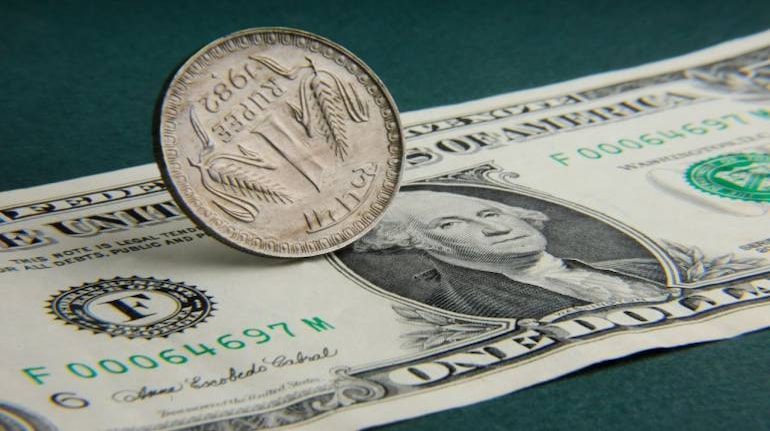



The fall in the rupee’s exchange rate against the US dollar is not concerning for India from a macroeconomic perspective due to the lower pass-through to inflation and lower amount of foreign currency debt, global research firm Capital Economics has said.
The rupee, which fell to a fresh record low of 83.215 to the dollar in the previous week, has been under pressure amid sharp monetary tightening by the US Federal Reserve and stubbornly high inflation at home. The rupee has depreciated 11 percent against the greenback in 2022, so far.
“As has been the case over the past few months, this has been the trigger for a series of alarmist reports,” Capital Economics Senior India Economist Shilan Shah said in a note. “But an important point that much of the commentary on the rupee has missed is that a weaker currency is not especially concerning for India from a macroeconomic perspective.”
While currency depreciation is often associated with stronger inflation pressures as import costs rise, for India, this pass-through is weak, the economist said.
He estimates that for every 10 percent depreciation in the rupee, headline inflation is boosted by around 0.5 percentage points.
Low FX debt
Moreover, India has a low level of foreign-currency-denominated debt, which means that the rupee's weakness does little to worsen corporate or sovereign default risks in the same way as has been with other South Asia economies, notably Sri Lanka and Pakistan, the economist added.
India’s finance ministry said over the weekend that while the central bank’s market interventions were minimising the volatility in the exchange rate, the series of measures taken earlier this year should stabilise the capital flows further and support the rupee.
The rupee performed relatively well in the first half of the financial year starting April 1, compared with other major economies, reflecting the strong fundamentals of the economy, it added.
Also read: India better placed than world at large with economic growth on track: Finance Ministry
The Reserve Bank of India failed to meet its inflation target and has been raising rates sharply over the last few months to curb prices.
Shah said that while the RBI has been intervening more than many other emerging market central banks over the past few months, the buffer of forex reserves is still well above where measures of adequacy suggest they need to be, allowing the central bank to continue intervening at this rate for several months yet.
“And because the macroeconomic fallout of a weaker rupee is limited, that takes the pressure off the RBI having to do lots more in any case,” Shah said.
Also read: Trade settlement in rupee—A long way to go
Rupee slide to continue
Capital Economics expects the rupee to continue depreciating gradually amid broad dollar strength to around 85 by the middle of 2023.
Thereafter, the Indian currency will recover as the Fed eases off the brakes and US treasury yields fall back, and as commodity prices take a leg down amid a worsening global growth outlook, the research house added.
Discover the latest Business News, Sensex, and Nifty updates. Obtain Personal Finance insights, tax queries, and expert opinions on Moneycontrol or download the Moneycontrol App to stay updated!
Find the best of Al News in one place, specially curated for you every weekend.
Stay on top of the latest tech trends and biggest startup news.